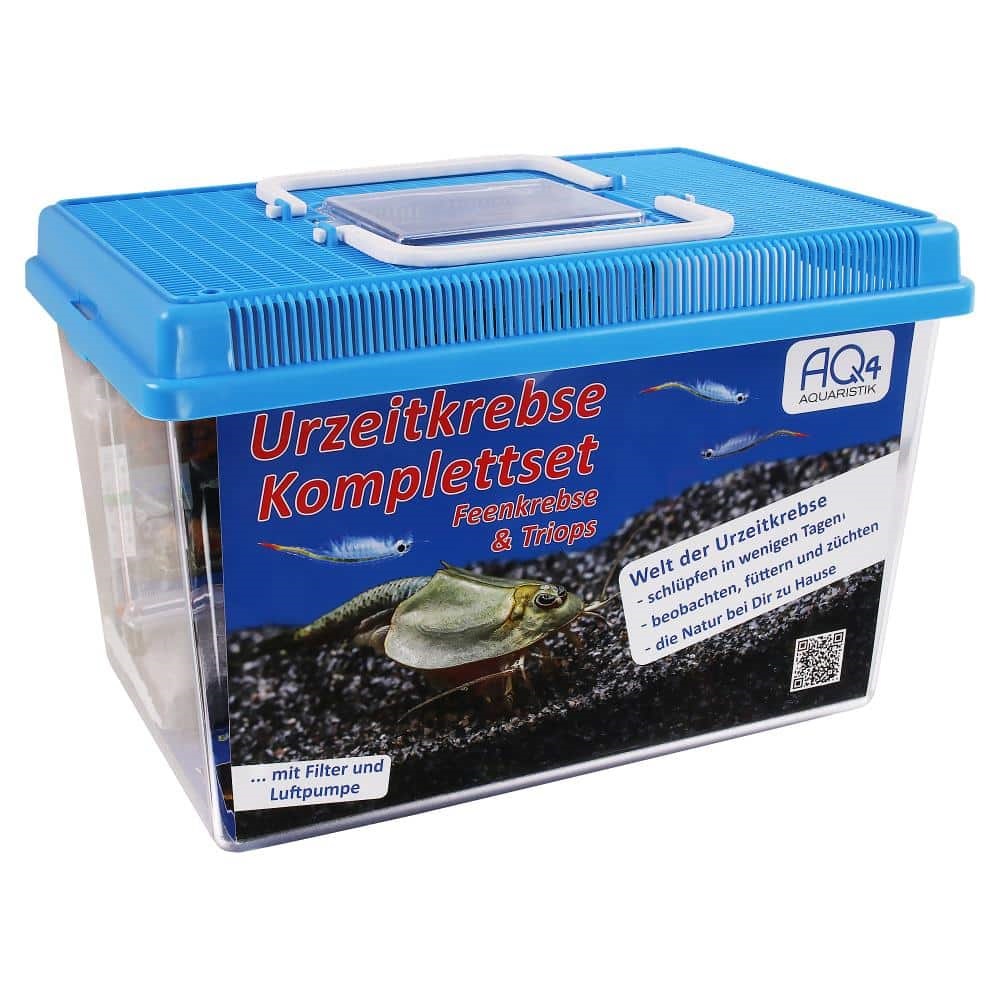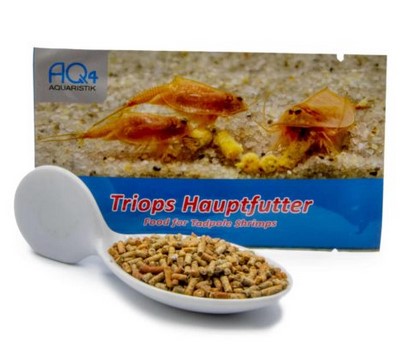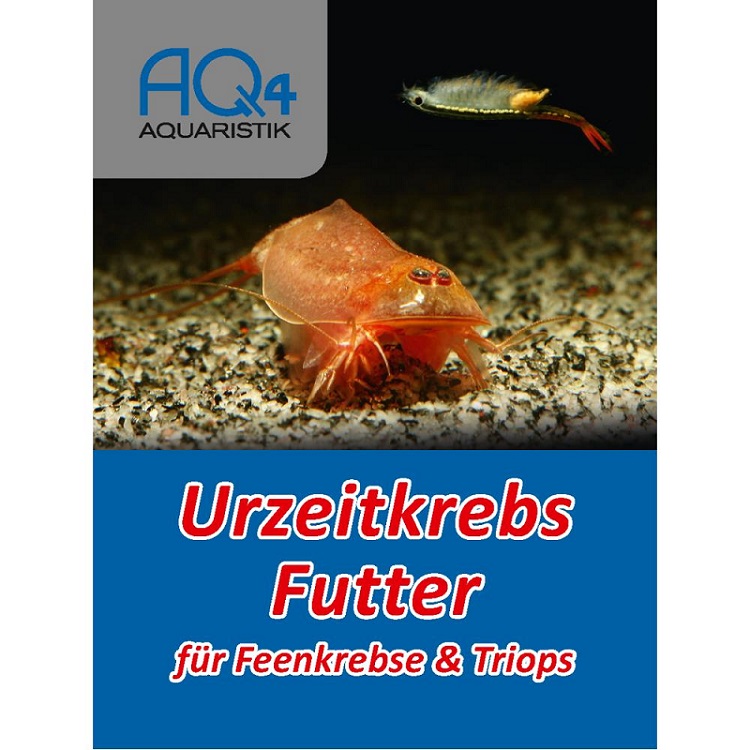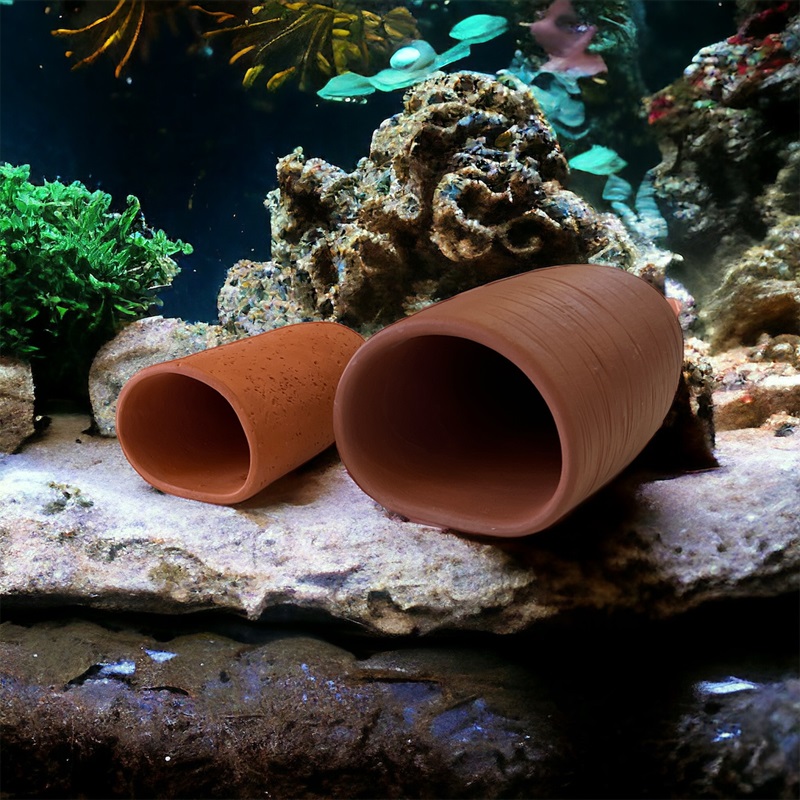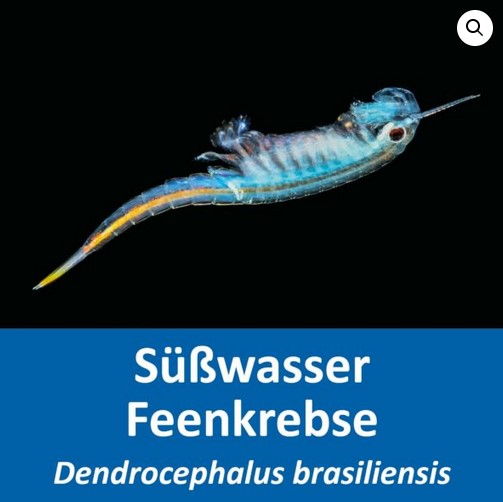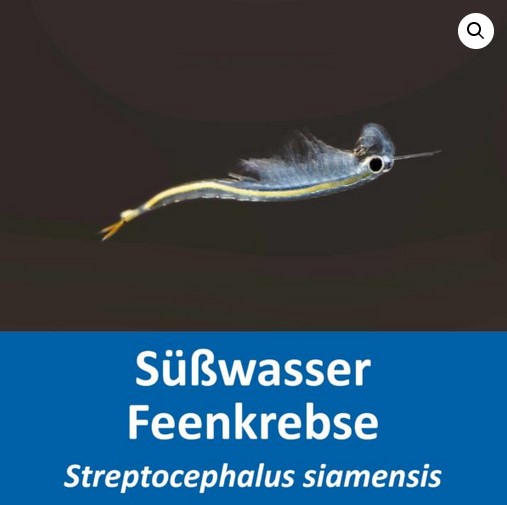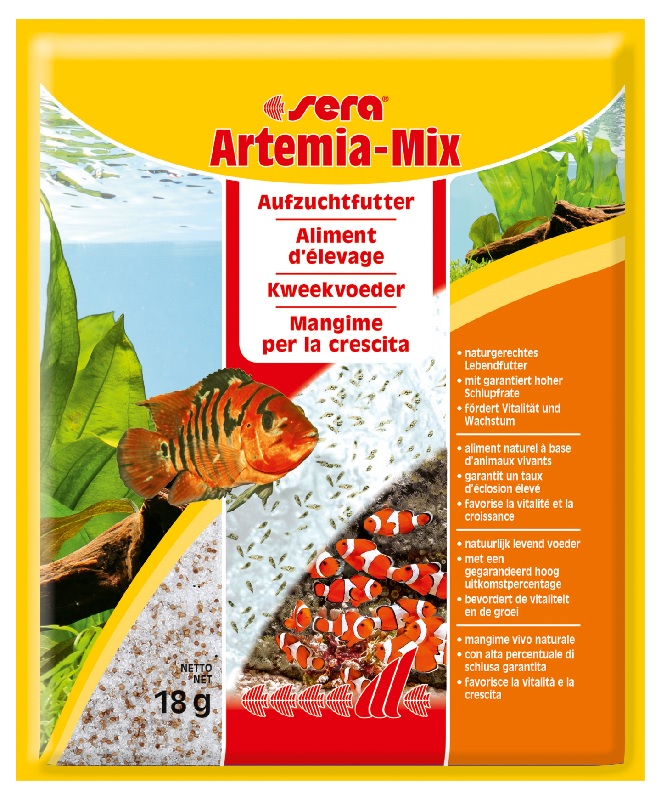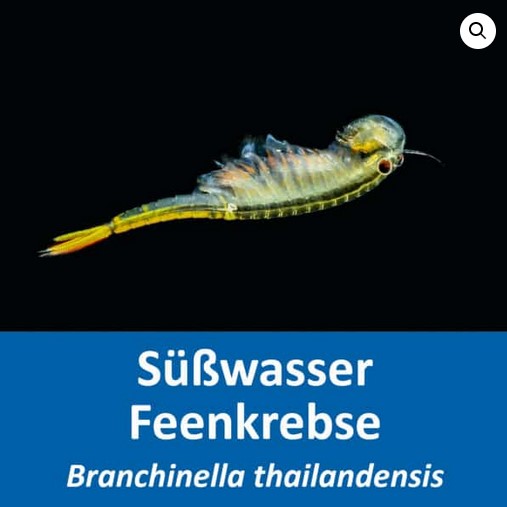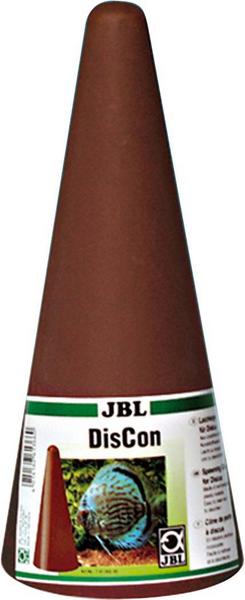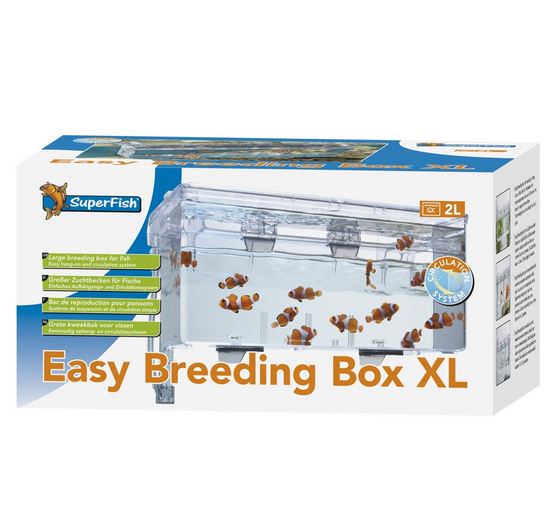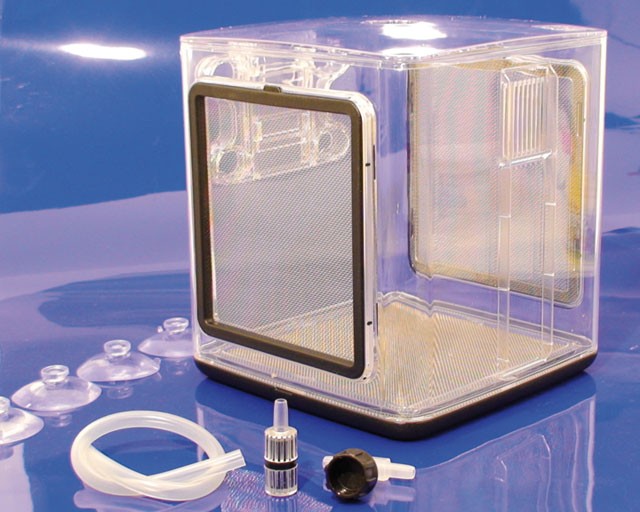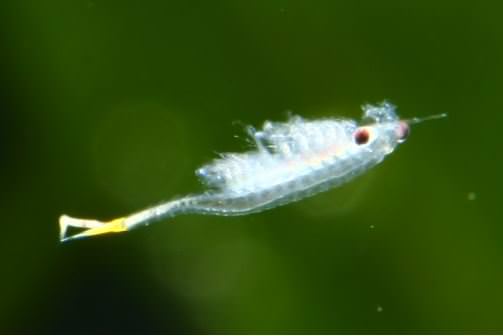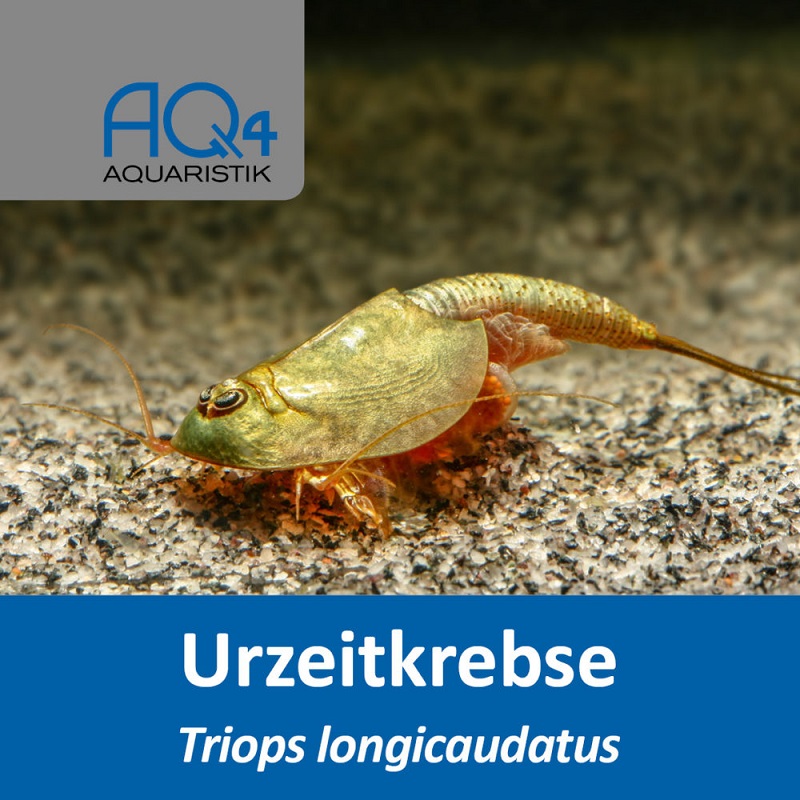
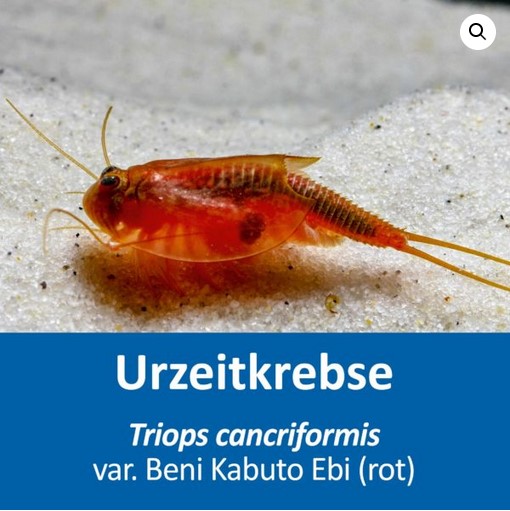
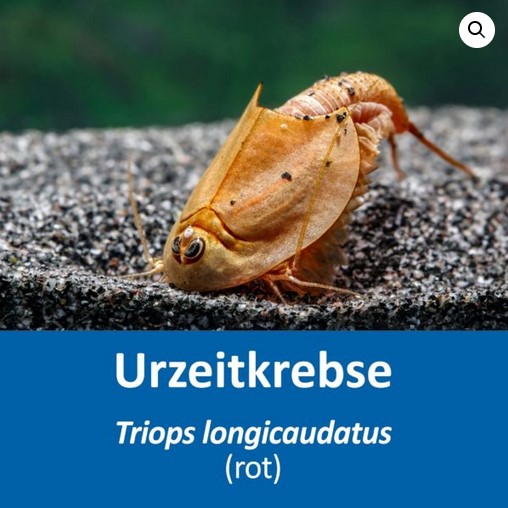
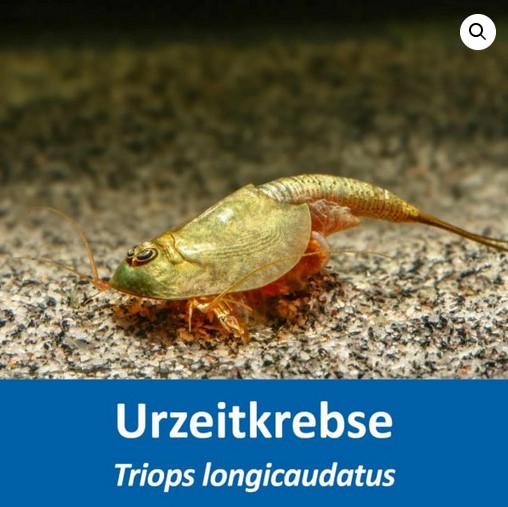












CHF9.90
Stock: 0
Available in 1-3 days, acquisition time 14 days

Primeval crabs
Observing primeval crayfish from the egg stage to the adult animals - a real experience at home.
is an American shield crayfish, which has a light olive-green marbling at the beginning. With age the marbling disappears and the colours become more intense.
Size: max. 9 cm
Temperature: 21 - 26 °C
Life expectancy: max. 3 months
Food: primeval crayfish food
Quantity: basically about 100 to 250 eggs
Size: max. 9 cm
Temperature: 21 - 26 °C
Life expectancy: max. 3 months
The original form is brown marbled. The red Triops lack the brown colour, which is why they appear red due to their body fluid. However, if you look closely, you can still see the marbling. As juveniles, like all Triops species, they are still quite pale. The strong pinkish-red colour develops only with age.
Size: max. 7 cm
Temperature: 20 - 25 °C
Life expectancy: max. 3 months
11 of 11 reviews
4.23 out of 5 stars
Login
January 13, 2024 19:04
Es sind eier geschlüpft und Preis/Leistung stimmt ebenfalls
Super schnelle lieferung, und auch eine gute menge für den preis denke isch. 5 sind beim ersten mal geschlüpft, und sie entwickeln sich super
October 27, 2023 09:48
Es sind viele Triopse geschlüpft.
Alles super!
October 27, 2023 09:48
Es sind viele Triopse geschlüpft.
Alles super!
October 27, 2023 09:47
Es sind viele Triopse geschlüpft.
Alles super!
September 19, 2023 08:25
Leider keinen Erfolg, trotz sorgfältiger Durchführung. Schade...Ansonsten wurde der Artikel schnell geliefert.
Leider enttäuschend, da keine Triops schlüpften.
March 31, 2023 08:01
Leider eine Enttäuschung
Leider ist nichts geschlüpft. Man erkennt auch keine Eier.
May 1, 2021 13:01
Guter Ansatz, es sind deutlich über 20
Guter Ansatz, es sind deutlich über 20 Tiere geschlüpft
April 19, 2021 11:16
Guter Ansatz
Es sind sehr viele Nauplien (>30) geschlüpft.
January 27, 2021 22:27
Alles i.o.
Ware kam einwandfrei an. Von den ca.40 Eiern sind 10 Triopse geschloffen.
September 25, 2020 15:14
Spannend
Bei uns sind jede Menge Krebse geschlüpft! Wir sind schon gespannt, wie die aussehen, wenn sie groß sind!
Zubehör
Suggested products
Customers also bought
Customers also viewed


